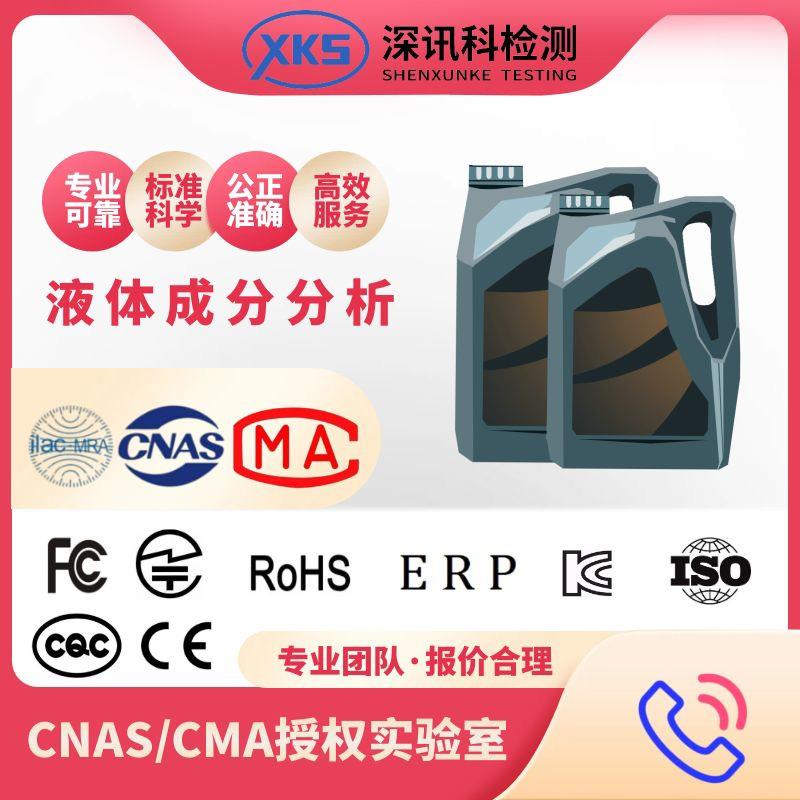VOC and other harmful substances test

Hazardous substance detection refers to the production status of substances in daily life and their contact with human beings, which may cause disease or health decline. Through the management and control of toxic and harmful substances, it can ensure that raw materials and processed products meet the environmental requirements of national non-toxic, low toxic and environmental protection laws and regulations, so that products can enter the domestic and foreign markets, meet the requirements of customers and the development trend of environmental protection.
Contents of hazardous substance detection RoHS / Rap / SVHC / posh / WEEE / detection, antioxidant detection, flame retardant detection, mold resistance detection, UV absorption detection, phthalic acid detection, polycyclic aromatic hydrocarbons detection, perfluorooctane sulfonic acid detection, asbestos detection, perfluorooctane sulfonic acid and salt detection, toy 19 heavy metal detection, VOC detection, azo detection, cod detection, etc. Detection range of hazardous substances Electrical and electronic products, food and contact materials, toys and children's products, clothing / luggage / shoes, automotive materials and parts, metal minerals, petrochemical, polymer materials, consumer goods, packaging materials, building materials / decorative materials, water quality, etc.
Hazardous substance detection can be divided into the following detection methods:
1) Volatile organic compounds
Total carbon TVOC: vda277, ts-int-002, pv3341, smc30158, FLTM BZ 157-01
Jlyy-jt-08, Q / sqr.04.98, ES m0402, etc
VOC substances (benzene, toluene, ethylbenzene, xylene, styrene...): vda278, GMW 15634, D10 5495, wss-m99p2222-c1, ES m0402, tsm0508g, etc
VOC value / fog value: vda278, GMW 15634, etc
2) Aldehydes and ketones
Aldehyde and ketone release (formaldehyde, acetaldehyde, acrolein, butanone, cyclohexanone...): GMW 15635, D40 5535, wss-m99p2222-c1, ES m0402, etc
Formaldehyde emission: vda275, gmw14236, pv3925, smc30155, FLTM BZ 156-01
Jlyy-jt-08, Q / sqr.04.96, etc
3) Fog performance
Gloss method / weight method: din75201, gmw3235-2005, pv3015, smc30157, SAE J1756, jlyy-jt-08, Q / sqr.04.97, D45 1727, iso6452, TSM 0503g, es-x83231, etc
4) Odor test
Odor grade / odor type: din75201, gmw3235-2005, pv3015, smc30157, SAE J1756, jlyy-jt-08, Q / sqr.04.97, D45 1727, iso6452, TSM 0503g, es-x83231
5) Other hazardous substance test
ELV directive (lead, cadmium, mercury, hexavalent chromium; PBB, PBDE);
Reach: 53 substances of high concern (SVHC) tests
Eco textiles: (extractable heavy metals, chlorophenols, phthalates, banned dyes...)
6) Other relevant physical and chemical tests
Qualitative and quantitative analysis of metal elements (including identification of various metal grades)
Steel alloy (iron, chromium, nickel, manganese, carbon, sulfur, silicon...)
Copper alloy (copper, zinc, phosphorus, boron, beryllium, arsenic...)
Aluminum alloy (aluminum, iron, copper, magnesium, manganese, nickel...)
Tin alloy (copper, iron, pickaxe, silver, gold, arsenic, zinc, aluminum, Peru, phosphorus...)
Material fingerprint characteristic atlas Library -- an effective way of material consistency control
Composition analysis of nonmetallic materials
Density and infrared spectrum analysis (main component)
DSC analysis (glass transition temperature, melting point, crystallization temperature, crystallinity, specific heat, oxidation induction period, etc.)
TG analysis (thermal decomposition curve, ash content, glass fiber content, carbon black content, etc.)

